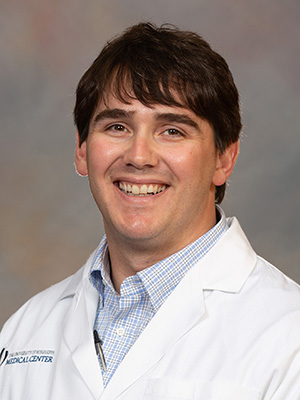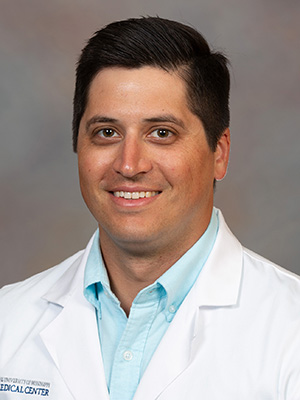Lifestyle changes extinguish heartburn, acid reflux discomfort
Of all the things Americans would like to get off their chests, heartburn is probably right up there.
A type of indigestion, that fiery sensation in the vicinity of the heart strikes more than 60 million of us at least once a month, reports the National Institutes of Health; some studies suggest that 15 million deal with it every day.
Often, the term “heartburn” is used interchangeably with “acid reflux” and “GERD,” but there are differences you should know.
On top of that, say experts at the University of Mississippi Medical Center, heartburn shares an occasional symptom with something much more sinister-sounding.

“Chest pain is a symptom of a heart attack, and it can be a symptom of acid reflux, but it’s not the most common symptom,” said. Dr. Adam M. Parker, an internal medicine specialist and gastroenterology fellow at UMMC.
“Chest pain should not be dismissed as heartburn. Patients with chest pain should first have a cardiac workup to evaluate for a cardiac cause, especially those over age 50, when the pain isn’t resolved with antacids and when it occurs with exertion or exercise.
“If these things are present, your evaluation may include an EKG or cardiac stress test. You want to take care of the heart first. So if you come to us with chest pain, that’s the first question we ask: ‘Have you had a cardiac evaluation?’”

Dr. Brandon Brousse, who is also an internal medicine specialist and gastroenterology fellow at UMMC, recommends a cardiac evaluation as “the safest route” for anyone who has chest pain and isn’t experiencing the typical symptoms of acid reflux.
“That’s especially true for women,” Brousse said – no doubt because the No. 1 health threat for women is cardiovascular disease.
“If it’s not cardiac chest pain, we treat for acid reflux,” Brousse said.
So what are the differences between heartburn and acid reflux, and between them and GERD – gastroesophageal reflux disease?
First of all, asking your doctor whether you have heartburn or acid reflux is sort of like asking whether you have an itchy scalp or dandruff. The former is a symptom of the other.
Other symptoms of acid reflux are coughing, a hoarse throat, difficulty swallowing and nausea. “It may feel like you’re throwing up a little bit,” Brousse said.
If you have unintentional weight loss and black, tarry stools, you should see a doctor right away, Brousse said.
If, for some reason, you want to improve your chances of getting heartburn, lie down less than an hour or two after eating – especially after consuming tomato-ey products such as marinara sauce and ketchup, or onions, fatty fried foods, carbonated beverages such as soda, caffeinated coffee, peppermint and many other things that make life a bowl of gravy – including, often, gravy.
“Here in the South, that’s practically our whole diet,” Parker said.
That kind of diet can produce a lot of gas in your stomach. “Which opens up the base of the esophagus,” Brousse said.
At the base of the esophagus, the tube that runs from the mouth to the stomach, is the lower esophageal sphincter – a kind of anatomical doorman or bouncer that, very briefly, permits invited guests (aka: the food you ate) to waltz into the stomach while keeping would-be crashers at bay.
Those crashers are the stomach acids, which otherwise make a valuable contribution to society: They make your invited guests easy to digest. But, let’s face it, acids should stay in their place. Which is exactly what they don’t do when a weak or lazy bouncer doesn’t promptly slam the door in their face.
And then you have reverse flow, or reflux.
“It’s common to have reflux into the esophagus while eating, but if it starts causing symptoms when they shouldn’t be there, such as at night or between meals, then you have acid reflux,” Parker said.
But what about GERD? Asking whether you have acid reflux or gastroesophageal reflux disease is a little like asking whether you have a headache or a really bad headache.
“Any reflux is, technically, GERD,” Brousse said. “GERD tends to be more frequent.”
That means more than twice a week for four to six weeks or more, Parker said.
“GERD” may not sound intimidating, but it deserves respect. The alchemy it can wreak on the cells of your body sounds more like something from science fiction instead of science: It almost literally makes your intestines or stomach leap into your throat.
This is called Barrett's esophagus, which occurs when GERD is long-lasting, Parker said. “To better deal with the acid it’s not designed to handle, the esophagus will adapt by changing its cells to resemble cells normally found in the stomach.
“If you keep punching a guy in the face every day, eventually he’s going to duck.”
Barrett’s is a ducking esophagus; but it comes at a great cost. “It can become cancer,” Brousse said.
“If you have GERD that is uncontrolled for years, and medications don’t help, you will get a recommendation for an upper endoscopy.” If the result is positive, a Bravo pH test, which measures acid reflux from your stomach, would follow.
“If Barrett’s is found, it needs to be monitored for cancer,” Brousse said.
Some people are more prone to Barrett’s esophagus than others, Parker said. Those include white males over age 50. Some other risk factors are obesity, long-standing acid reflux, a family history of Barrett’s esophagus in a first-degree relative, and smoking.
What can you do to avoid getting to this point?
“It’s important to be screened for it,” Parker said. “Talk to your regular provider, who may refer you to a gastroenterologist.”
Lifestyle and diet changes improve acid reflux symptoms, Parker said. “Don’t eat close to bed time, less than two or three hours. Your sphincter doesn’t know you’re about to go to sleep.
“Don’t wear tight-fitting clothes, tight-fitting around the waist.”
And avoid eating those trigger foods, which also include citrus fruits, alcohol and chocolate, Brousse said. “It’s a good idea to keep a food diary to see what may be causing symptoms.
“Also, when you go to bed, you could elevate your head six to eight inches. Put bed risers under the headboard, or try a wedge pillow.
“And quit smoking. Lose weight.”
The idea is to give lifestyle changes a chance before resorting to medications. If change doesn’t work, doctors may recommend Prilosec or other proton pump inhibitors for a couple of months.
“Those are the main medications we try for people who have acid reflux,” Brousse said. “Over time, we try to wean them off of those so they won’t be on medications long-term.”
As with many ailments, corrective surgery can be the last resort. A standard treatment, laparoscopic fundoplication, reinforces the lower esophageal sphincter: the doorman.
A key to avoiding the need for surgery – pretty much everyone’s goal – is getting checked early before reflux worsens, before it becomes harder to treat.
Otherwise, Brousse said, “it’s like a house, if you leave it unattended.”
Almost certainly, the cost of repairs will give you heartburn.
The above article appears in CONSULT, UMMC’s monthly e-newsletter sharing news about cutting-edge clinical and health science education advances and innovative biomedical research at the Medical Center and giving you tips and suggestions on how you and the people you love can live a healthier life. Click here and enter your email address to receive CONSULT free of charge. You may cancel at any time.



